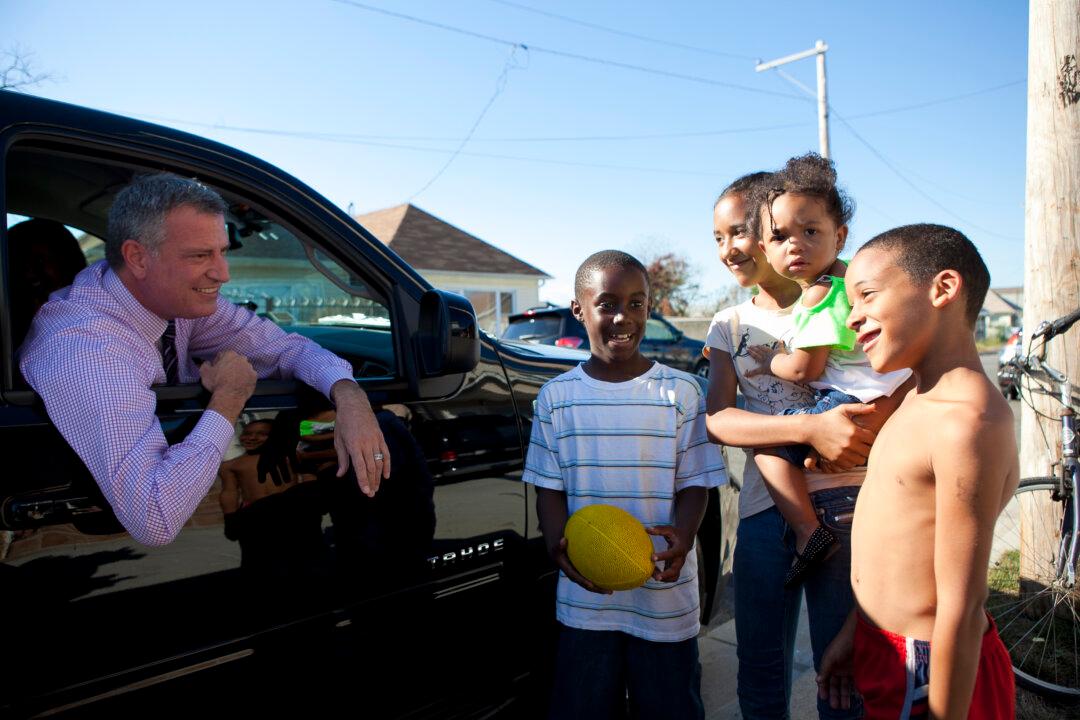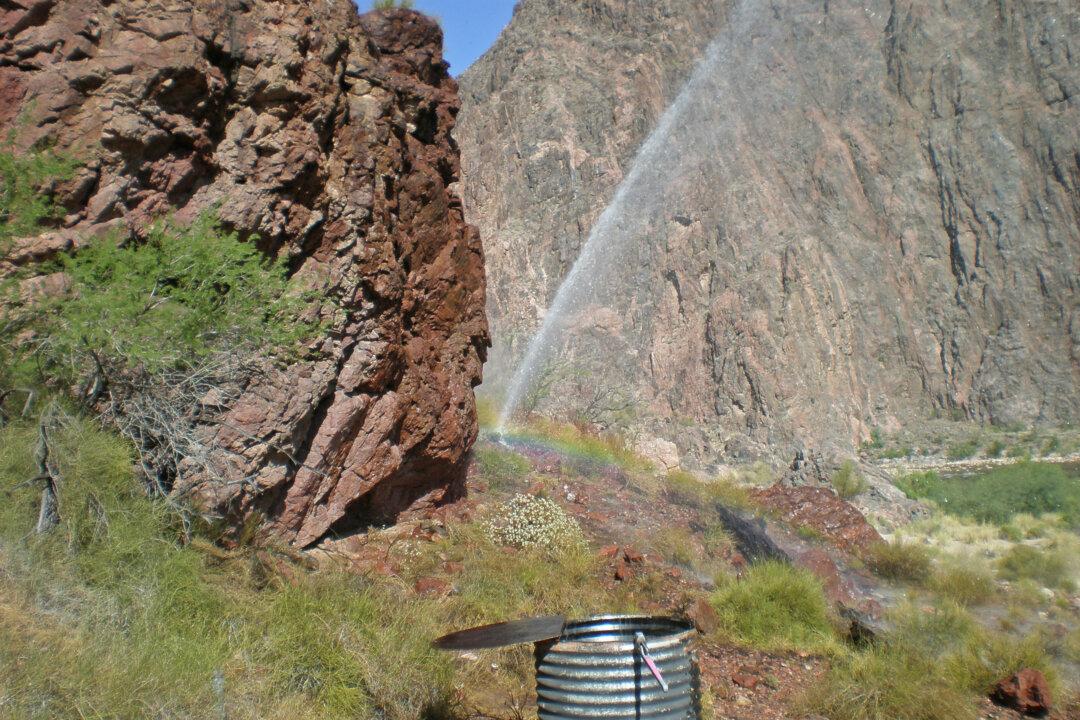NEW YORK—For parents around the city with pre-kindergarten or middle school aged children, next fall may offer a lot more options for childhood education, if Democratic mayoral nominee Bill de Blasio is elected.
The mayoral hopeful has toured around the city for over a year talking about his plan to raise taxes on the wealthy to pay for much needed pre-k and after-school care slots. The plan raises taxes on New Yorkers making over $500,000, from 3.9 percent to 4.3 percent. De Blasio said he expects the increase, which will last five years, to raise $530 million in revenue.
Much of the talk has centered on the tax increase, which will require approval in Albany, but little attention has been paid to the question of where tens of thousands of children would fit.
On Thursday, the campaign shed light on the details, providing a peek into the depth of thinking that has gone into de Blasio’s centerpiece plan.
Roughly 68,000 children are eligible for pre-k seats in the city. Of those, 20,000 are currently enrolled in full time programs, 38,000 in part-time programs, and 10,000 in no programs at all.
The plan sets aside $50 million (from the increased tax revenue) for leasing space. The type of spaces will vary by borough and neighborhood, but a representative for the campaign said many will be parochial schools, which are currently under capacity.
The parochial schools also have much of the infrastructure needed to accommodate small children, such as shorter water fountains, and toilets.
Using available spaces allows for parents to take advantage of the program as early as fall of 2014.
Article Continues after the discussion. Vote and comment
[tok id=f1a0c661904355e6b187649a956cdfa4 partner=1966]Centers for Pre-K Learning
The leased space will provide a short-term solution until pre-k centers are built, something de Blasio will use capital money, not tax revenue, to pay for. In a tight budget, there is no extra capital money lying around, however, the mayor can decide how to allocate money based on priority. De Blasio has confirmed multiple times this education policy is his number one priority.
Once built, the pre-k centers would address space shortages in some public schools, which are already sharing space with pre-k classes.
“The leasing gets you there without the need to build any new capital, although the long-term goal is obviously capital construction,” said the representative.
“Regardless of how long it takes capital [money] to get up and running, recognizing it can be a slow process, there will be money available to lease and accommodate these kids in relatively short order.”
After-School Programs
The after school portion of de Blasio’s plan would affect roughly 180,000 children, according to numbers given at a press conference in Red Hook on Oct. 2.
De Blasio said he targeted middle school programs because it is a critical time for children, when they are learning social skills, as well as preparing for the ever-changing knowledge economy. Getting children to not only graduate, but also be college ready, is key, according to the mayoral hopeful.
“The educational demands of this economy get greater all the time,” de Blasio said. “If we were to continue this status quo we would not just be staying still, but we would be going backward year by year because the demands of the modern economy are intensifying with every passing year.”
There are currently two types of models used in the city for afterschool care: in school or at a facility not associated with a public school.
The representative said de Blasio plans to utilize both models, but will likely use more of the in school option because it offers a seamless transition for the children. It will also make it easier to find space to accommodate the influx of children to the programs.
Teaching Model
The After School Corporation currently operates ExpandED Schools, which incorporates daytime learning into after-school programs, programs that align with the de Blasio vision. It has joint planning sessions between its staff and school staff to find out the needs of the children.
The after-school lessons are not always academic. A balance of sports, and cultural events is mixed in, based on the needs of the students, and most days offer something new.
Lucy Friedman, president of After School Corporation, gave an example of a class teaching a social studies lesson about the Lewis and Clark Expedition during the day, and utilizing the after-school program to do a play about the same subject.
“There is a real effort to integrate the theme,” Friedman said. After School Corporation has not endorsed Bill de Blasio’s mayoral candidacy.
Students may be in the same building as their school, but the structure in the after-school program is much more fluid, without the rigors of grades.
“The goal is to create an environment where kids can make mistakes because that is how you learn—trying and exploring new things, not worrying about being tested on it or getting a grade on it,” Friedman said.
In the five years since the program launched, Friedman said she has seen it change the environment at the school toward increased parent involvement and student attendance.
Currently in 30 schools in New York City, Friedman said the program has been developed to scale up.
“It is a question of resources to do this in more schools,” Friedman said.
This is where de Blasio hopes to step in.
The plan, which sounds great on paper, does have a big caveat: it will require approval from both houses of the state Legislature, as well as a signature from Gov. Andrew Cuomo.
With state elections scheduled for November 2014, many, especially Republicans in the Senate, say the tax will not pass.
De Blasio has remained adamant it will go through, arguing localities have the right to raise their own taxes, and Albany has let it happen in the past.
“There is no plan B,” de Blasio said. “I am dead set on achieving this plan in 2014.”





